Infrared photography can reveal an eye-opening world of visual wonders, one that will continue to surprise you with its possibilities. And you might be surprised by its affordability.
What Is Infrared Photography?
Infrared photography captures part of the light spectrum that the human eye can't see: wavelengths that only frogs, snakes, fish and some insects are privy to. With the right equipment and techniques, infrared photography captures wavelengths beyond 700nm (nanometers), the limit of human vision. The technical details aren't as important, however, until you get into experimenting with different wavelength filters. More on filters a bit later.

The image above shows the range of wavelengths for visible to infrared light. The graph image is under CC via Wikimedia Commons, and annotations were made to the image.
As far as terminology goes, near-infrared (near to the visible light spectrum) is what we are referring to photographing when we speak of "infrared" photography. This is not to be confused with thermal infrared light, captured by heat-sensing cameras further up on the frequency spectrum. Thermal infrared cameras are used more in scientific applications such as agriculture, forestry, etc.
So why bother capturing a spectrum of light that the human eye can't see? Well, the answer should become obvious if you appreciate fine art photography and look at some examples. The entire infrared world, especially in the realm of nature, takes on a beautiful, dream-like look that can cross over into the region of art.
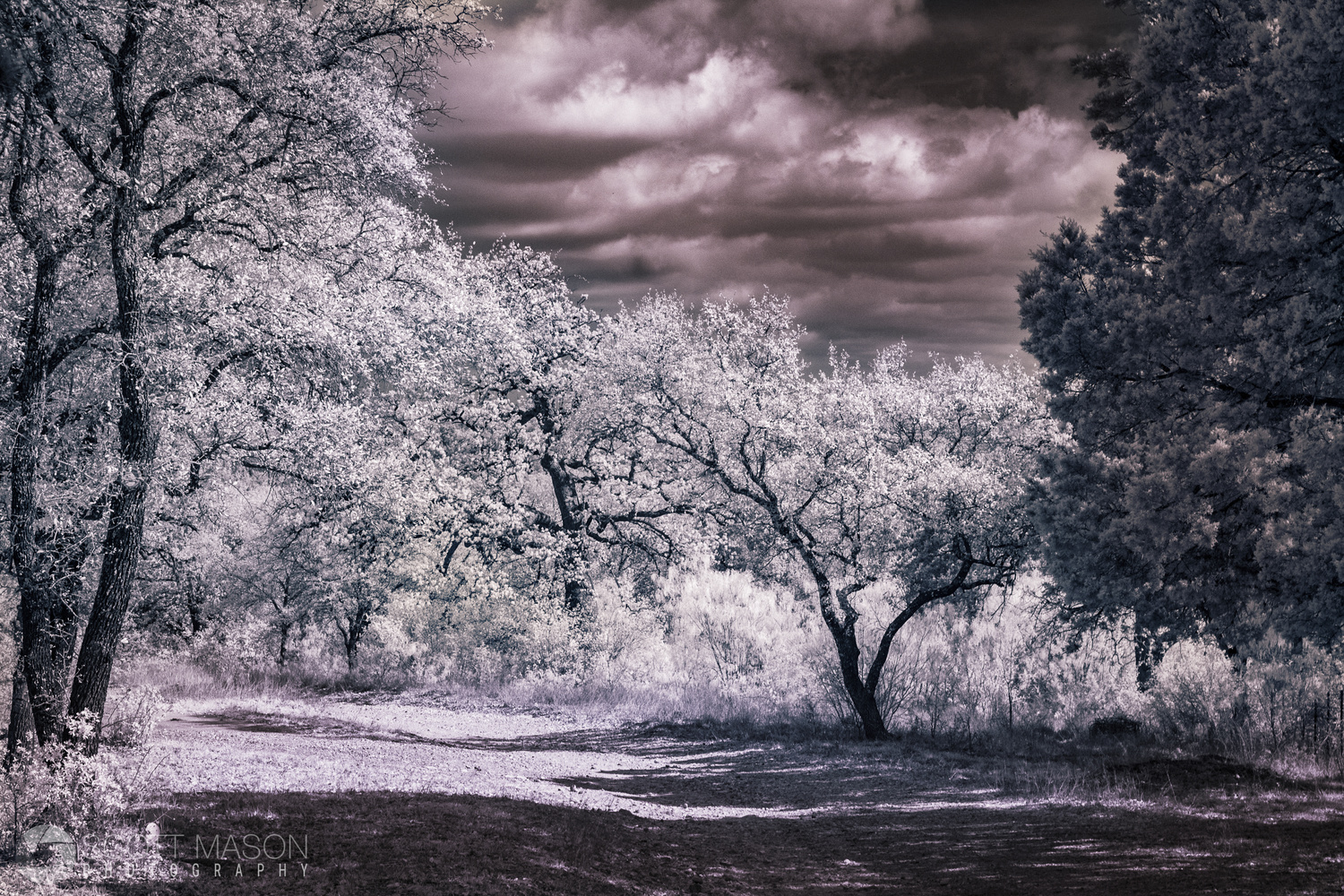
This image was achieved with a composite of two identical exposures. The sky was processed with a different false color, then masked in over the base exposure.
Infrared photography is achieved with special photographic filter or camera / filter configurations. Infrared-specific film exists as well, but for the sake of contemporary technology this article will focus on digital.
What to Expect
When capturing your first infrared photographs, the results can be jaw-dropping. Assuming you're shooting outdoors (which I recommend), the first thing you will notice is that foliage glows bright white. This is known as the "Wood Effect." Actually, that name doesn't stem from the visual effect of infrared light on trees, but rather Robert W. Wood, a physicist who was as the pioneer of infrared photography.
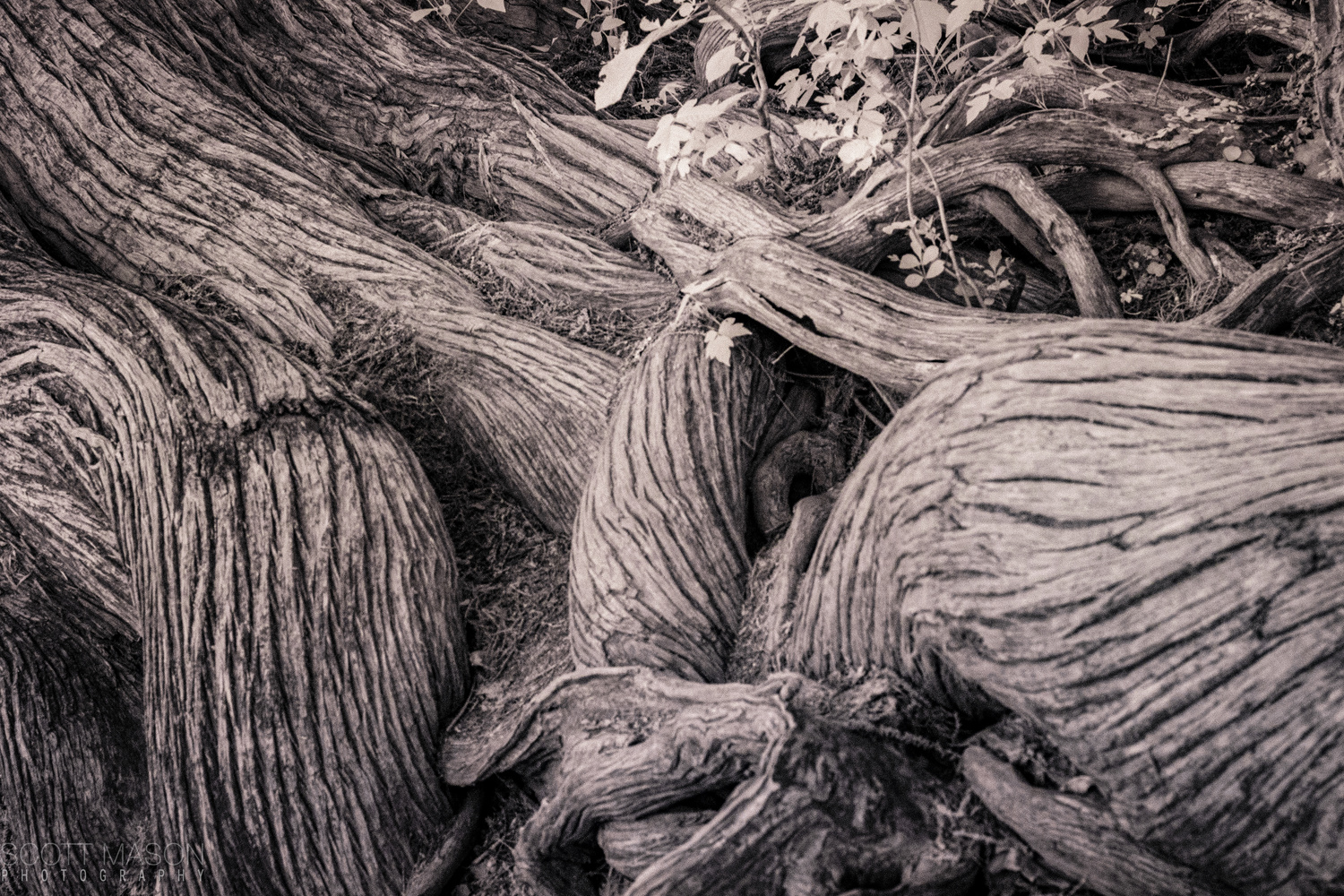
Robert Wood would be proud.
Just going out and trying infrared photography on your own, you’ll be pleasantly surprised. Here's a short list of photographic subjects that will take on a dramatically different (infrared) light:
-
Foliage. The effect of glowing foliage created by infrared photography is distinctive. Although you will find tonal variations in foliage, typically it will be whitish to golden yellow, depending on the type of infrared filter you choose. The most commonly used filter is 720nm. This filter produces the most reliable results since it’s not too close to either end of the infrared spectrum.
-
Water: A body of water that appears reflective and bright might appear murky and black. And depending on the lighting, a dark pool or body of water may even appear translucent. This subject always surprises me.

Another monochromatic example, but this time with a 720nm filter. Notice how the lake took on a deep, black look. It was actually a bright, sunny day out and the pond was rather reflective and bright to my eyes.
-
Dyes: Infrared photography can penetrate certain dyes, such as hair dye and some fabrics. I was blown away the day I pointed the infrared camera at my wife, who had dyed purple hair. The camera saw straight through to the bleach underneath, and her hair appeared bright white in the image.
-
Skin tones look soft and almost glow. This can make for an alluring portrait, but I've also noticed that those with darker-colored eyes can appear to have pitch-black irises.
-
The sky: Tonal definition in clouds can look absolutely stunning in infrared. I recommend playing with color channels, including color luminance sliders, to see what you can creatively produce with your infrared sky photography.
-
Keep experimenting with other subjects, as you never know what you'll find. For inspiration, here's a link to a variety of subjects taken with infrared.
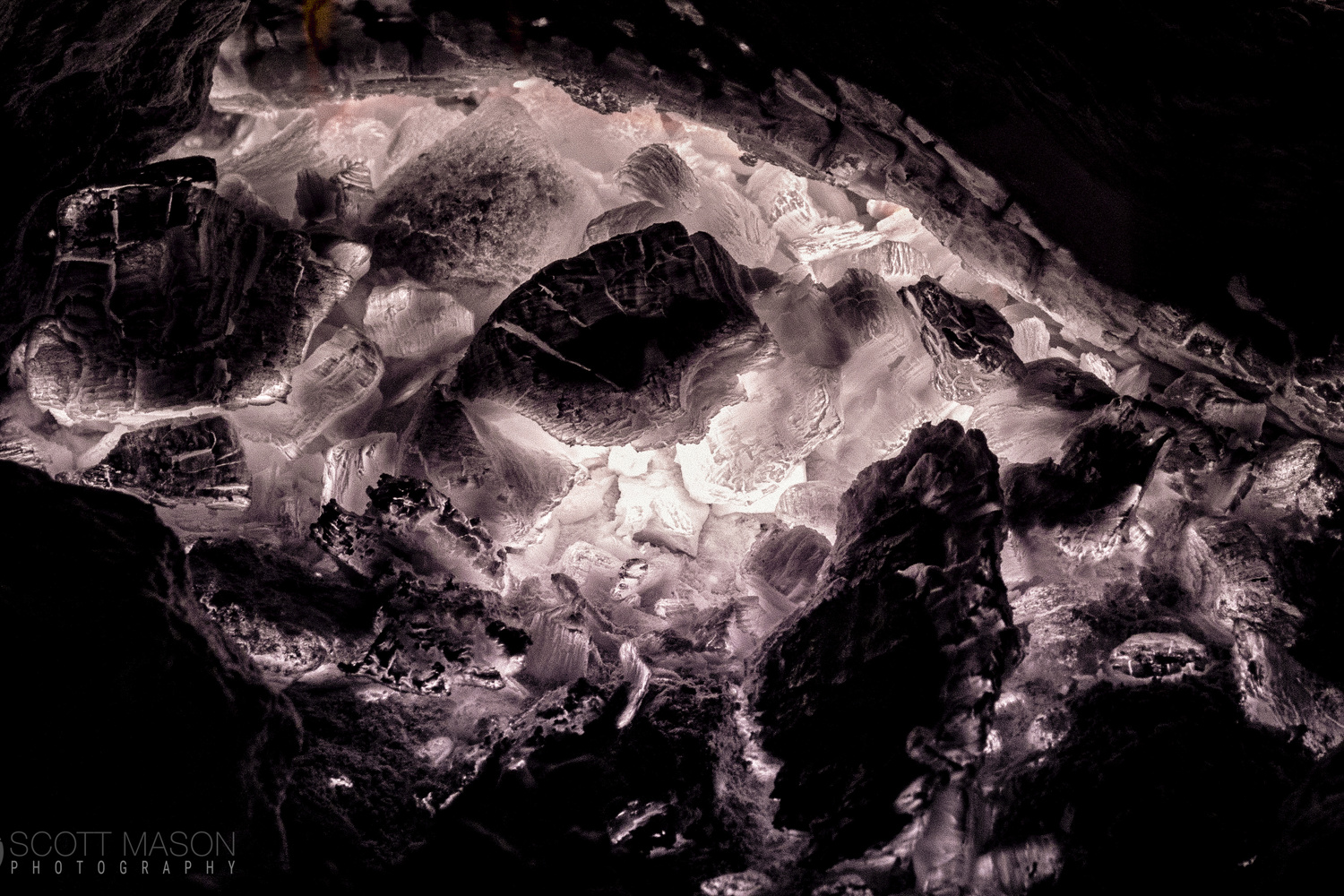
The images in-camera might appear intriguing, but they are only the first step in creating your end product. Your subjects will also take on a whole new look if you use Photoshop to manipulate the color channels in post, thus creating "false color" artwork.
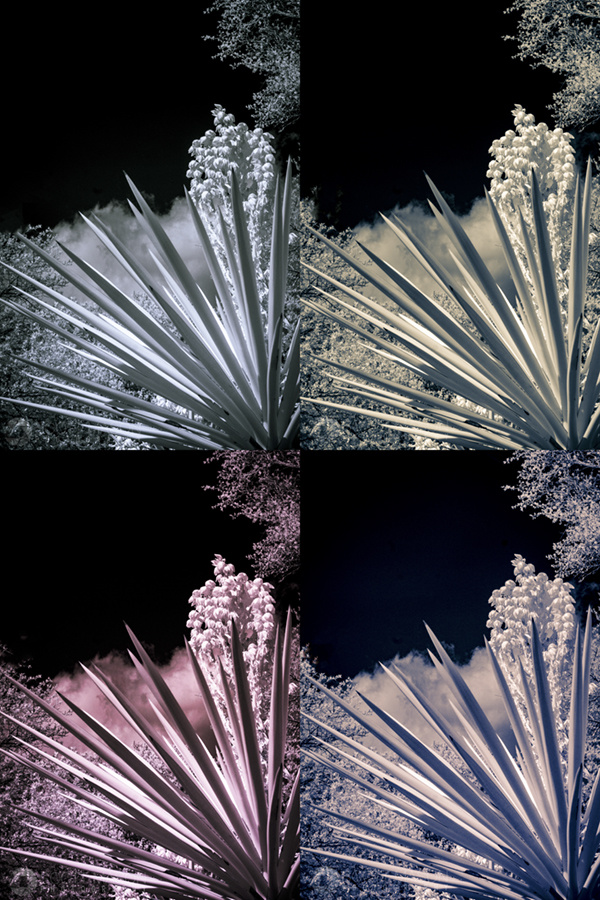
Four different examples of false-color effects, all on the same image.
Minimum Gear Requirements (Your Cheapest Option)
The most simple and inexpensive setup to begin experimenting with infrared photography is to simply purchase IR filters that fit your lenses. This method doesn't require any extra equipment besides the standard tripod. The downside of this approach is its limitation to long exposures.
With just a filter over a normal camera, you are still fighting the infrared filter that sits atop all DSLR camera sensors, while forcing a narrow band of light through the infrared filter. This narrow band of light typically sits at the far end of the visible and infrared spectrum. Shooting this way requires longer exposures, in the range of several minutes. This means handheld shooting definitely is not an option for the most simple approach.
Trying the filter-only approach is a quick way to get started, and it could cost you less than a meal at a restaurant. Which filter should you buy? There's no need investing in a high-end infrared filter, unless you're getting very serious about this niche.
The above approach is fine if you plan to photograph only landscapes or are on a budget. If, however, you decide to bring it up a notch and go handheld, you will need a modified camera body.
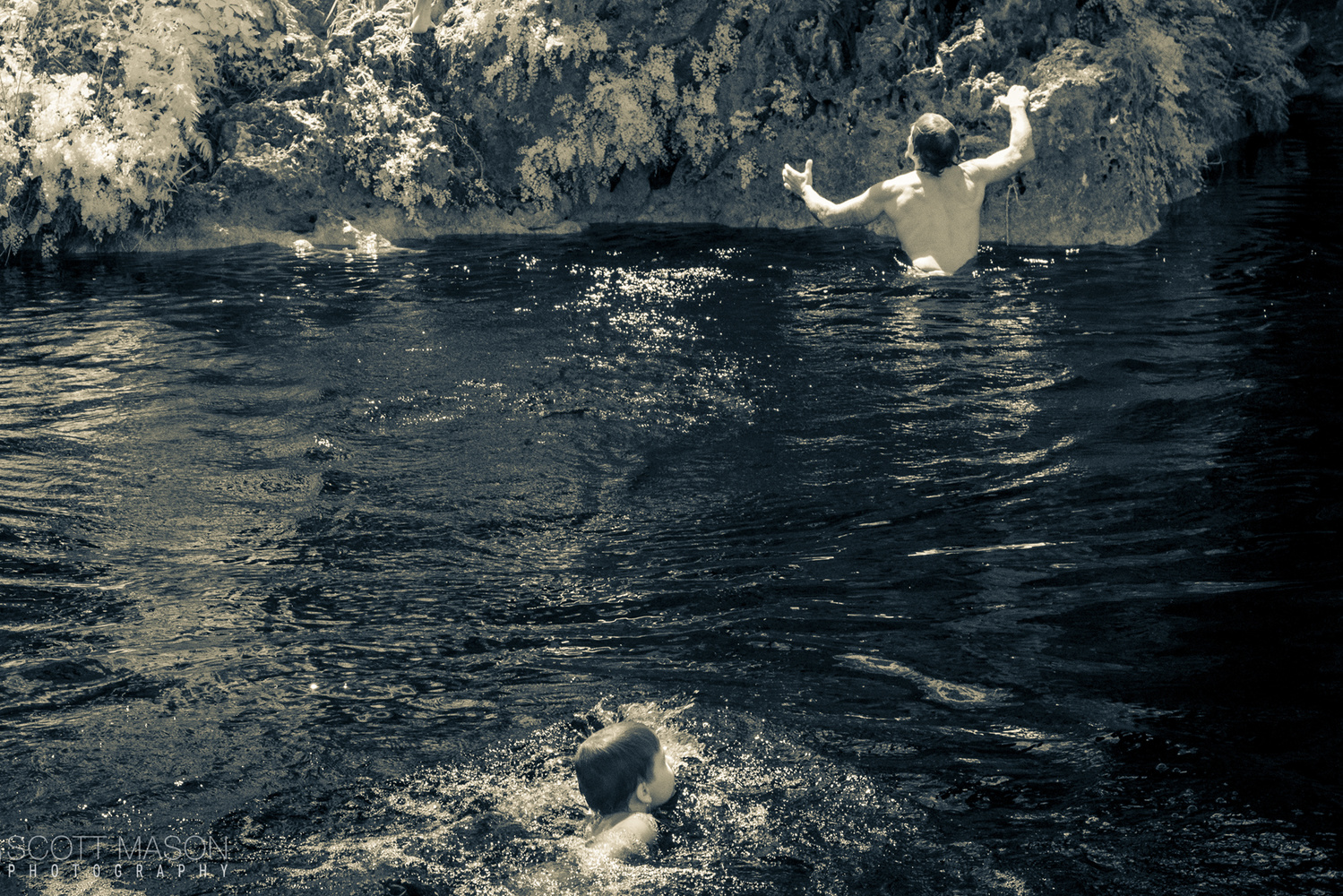
Infrared-Modified Cameras
If you're more serious about pursuing infrared photography, you'll want to either seek out a pre-modified camera for purchase or consider creating your own. Modified infrared cameras have the internal infrared filter (the one that sits over the image sensor) removed. This allows for the full infrared spectrum of light to enter the camera, making handheld photography with infrared lens filters possible. (More light means faster exposure time.)
You could buy a secondhand camera on the cheap for the purpose of infrared modification. Alternately, you could convert one of your old cameras at home by removing the infrared filter from the sensor. But be aware that such conversion could potentially damage the camera and will absolutely void any warranty on it.
Infrared modification even works with compact cameras, although modifying compact models may produce focus issues. Make sure at-home modifications are a risk you can afford before attempting them. If you're not confident in modifying a camera yourself, you can send it in to LifePixel. (That's not a paid endorsement) I recommend this company because they've been around for ages and have high quality control standards.
As I mentioned earlier, another option is buying an infrared-ready camera. Make sure you are buying from a reputable source. I purchased an infrared-ready camera in 2012 and since have had no complaints. Scouring both LifePixel and eBay, you can find used converted cameras for as low as $80. That's not too shabby, considering you can find the filters for as cheap as $16.
Just remember that even with a modified camera, you will normally still need infrared filters to control which wavelengths are being exposed. The results achieved on a modified camera sans filter are interesting, and can produce unique monochromatic effects.

An infrared photo taken with no filter, lightly processed in Photoshop to change overall hue from red to magenta.
I had ordered my infrared-ready camera intending to take my astrophotography to the next level. Infrared cameras can pick up light emitted by hydrogen, whereas standard cameras are not sensitive to this gas. Hydrogen makes up the red nebulae seen in deep sky astrophotography. For this reason, many astrophotography enthusiasts purchase or modify a specialized camera to capture more infrared images.
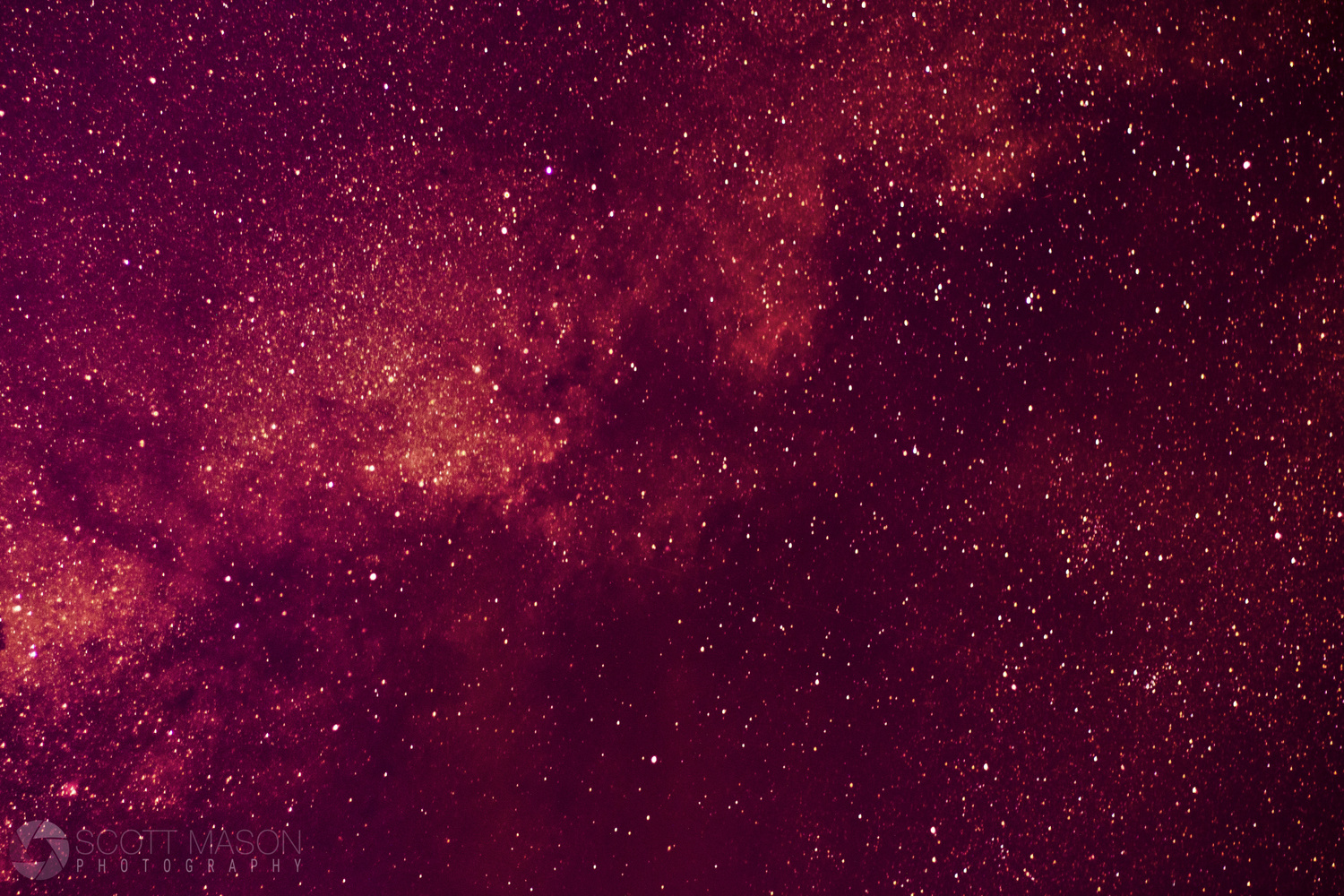
Hydrogen nebulae in the Sagittarius region. 1.85s, f2.2, ISO 200. No lens filter, mounted on a CG-5 mount by Celestron. 50mm cropped.
Although I have had good results capturing red nebulae with my modified camera, I've made much more use of this modified camera shooting camping excursions and nature walks, using a simple 760nm filter. However, I ran into one particular challenge with this type of handheld, on-the-go infrared shooting: focus.
Focusing With Your Modified Camera
Because of the optical disparity created by removing the infrared filter from the camera's sensor, your modified camera will not provide accurate autofocus and your liveview will appear too dark when a lens filter is applied. Instead, you will be manually focusing with your DSLR's live view, as the live view system is unaffected by the focus shift. This will force you to slow down and magnify the live view to ensure proper manual focus.

Live view focusing can make composing the frame awkward.
Summary
Infrared photography can breathe new life to your creative work, and offer a fun alternative to everyday photography. It's enriching to see the light spectrum more broadly and re-imagine the world around you. The world of infrared can serve as a powerful reminder that there is more to the world than meets the eye.
If you have a body of related work that you'd like to share, or a special processing technique for your infrared photos, please share in the comments section below.







Nice article! I've been wanting to try a bit of infrared photography. What did you use for the swan photo? I saw the mention of the 720nm filter, but the water is not blurred. Where you using a modified camera as well?
I wonder whether you could use these to blend with a normal image - although that would entail complications because you'd be swapping lenses/cameras.
A while ago I did a short collaboration with a researcher into hyper-spectral imaging. I had no real sense of what these things could do, and only got mediocre results. A selfie image showed really exagerated pores on my skin, not attractive.
More successful was my conventional portrait of him!
Would not be too hard if you used a lens large enough to use a lens collar and mount the lens to the tripod, then change the bodies without disturbing the lens.
Scott, it's always nice to see more people interested in IR. I hope this is OK to post; I recently did a video about shooting infrared artistic nudes with a full spectrum a6300 and an 850nm IR filter. You mentioned how surprised you were to see your wife's hair change color so you may be interested to see some of the other effects of IR on skin:
This is the video (not sure I can post a link, here goes)
https://youtu.be/AutGLFRh6lI
I'll have to read that more in detail when I get a bit of time. Worth mentioning - I think - is the possibility of using IR film in a film camera.
I mentioned it briefly but did not go into it. I did a bit of reading on IR film during the creation of this article and the variations they can produce look really interesting. I wish I had more time to get into it!
Frankly, IR film is cheaper to go for especially if you just want to try it out and there's no need to buy an expensive filter and/or pay to permanently vandalise your digital camera that you might never use again if you decide you don't like IR after all.
Besides, BnW is best done in the darkroom and IR BnW fits into that category.
Just a polite rebuttal: You can buy an infrared lens filter for as cheap as $16, and still take infrared photos with no need to tamper with your digital camera.
Didn't know they could be that cheap but would imagine they would be kinda crap quality. Who walks around with a £16 polariser for example? I still stand by IR film as BnW film has vastly more tonality than any digital camera
Its a good article, however I would argue that a DSLR is not the right camera if you want to convert one to IR.
A mirrorless camera will allow you to retain use of the viewfinder and not have the issues with lens focusing. I use a Sony A6000 at present, and they can be got pretty cheap. if you want to go the whole hog a Sony A7 will give you great resolution and can be found 2nd hand pretty cheaply
Thank you, Tony! The DSLR-specific focusing issues can be a hindrance to shooting. It's good to know that there are other options!
Here's another option. Rent. You can rent camera bodies that have been converted to IR. I rented a Canon 7D from LensRentals (I have zero financial interest in them) with a 715nm filter in 2017. It was great! I probably spent $100 for the time I had it, and realized: a) real time infrared with color added is very cool! and b) it's not for me. It was great, it was fun! Some day I may rent another IR converted camera again, but for now it's simply a curiosity.
Here's a link to the aforementioned shoot. The first is SOOC before any conversion. The second is after using Adobe tools for conversions.
https://grahamglover.zenfolio.com/p261893266
1. Buy a used Sony DSC-F707, F717 or F828.
2. IR filter of choice.
3. Neodymium Magnet
Google is your friend on this.
Use the magnet to flip the hot mirror out of the way.
You now have a full spectrum camera
Be sure to set the custom white balance.
Does anyone know if there's a site for finding proper exposure guide when using film...B&W and color? Just curious. Thank you